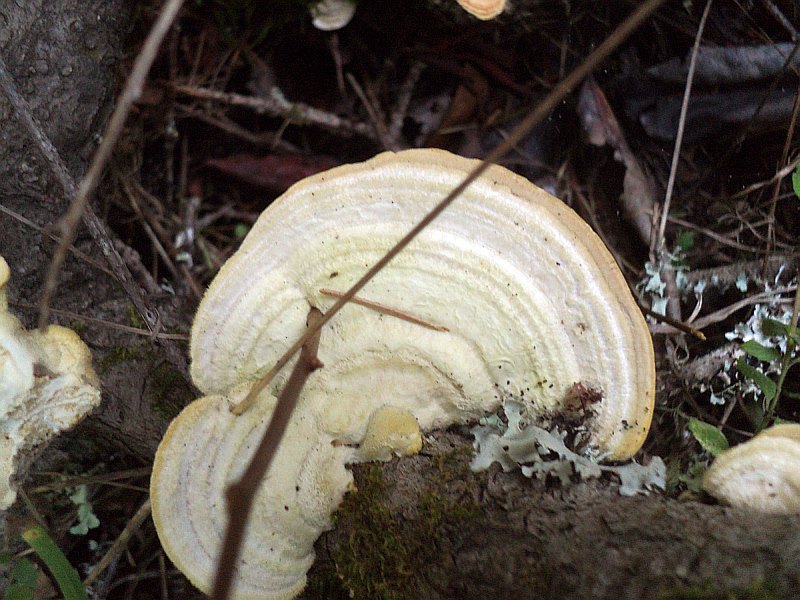Aniseed Polypore: Red Data Book of Armenia

Category. CR – Critically Endangered.
Brief description. Fruit bodies are 5–15 x 3–8 cm, white, yellowish, yellow–brownish or ash–grey. Wintering fruit bodies are black, ungulate, pulvinate, sometimes spread, annual. At first the surface of the cap is velvety, finely pubescens, then glabrous, smooth with equal, rounded margin. Flesh is yellowish with bitter taste and pleasant odour of anise. Hymenophore is cylindrical, consisting of thick–walled, globose, white pores (average 2–3 pores on 1mm). Spores are 4,5–6 x 3,5–4,5 µm, colourless.
Distribution. Generally in Europe, Asia, Northern America, Southern Caucasus (Armenia). In Armenia it is rarely met, it can be found in Ijevan floristic region – in the territory of “Dilijan” National Park, Aparan floristic region – in the surroundings of the river Marmarik.
Ecological, biological and phytocenological peculiarities. It is met on the trunks of living trees, on the branches of dry trees, in broad–leaved forests on the altitude of 1600–1800 m in June–July. Xylotrophic fungi. It is weak parasite and caused white rot.
Main factors of endangering. Disappearance of corresponding ecosystems.
Nature conservation measures. In Armenia it is conserved in corresponding ecosystems of "Dilijan" National Park. It is necessary to carry out works in discovering new habitats. It is included in the list of macromycetes, which are guaranteed to be ratified by the Bern Convention.
Suggestions
 The Ministry of Environment sent a letter international partners to draw their attention to the real danger of environmental disasters as a result of Azerbaijan's large-scale aggression towards the territory of Armenia
The Ministry of Environment sent a letter international partners to draw their attention to the real danger of environmental disasters as a result of Azerbaijan's large-scale aggression towards the territory of Armenia
 Vicia pisiformis: Red Data Book of Armenia
Vicia pisiformis: Red Data Book of Armenia
 Vavilovia formosa: Red Data Book of Armenia
Vavilovia formosa: Red Data Book of Armenia
 Trigonella capitata: Red Data Book of Armenia
Trigonella capitata: Red Data Book of Armenia
 Trigonella astroides: Red Data Book of Armenia
Trigonella astroides: Red Data Book of Armenia












